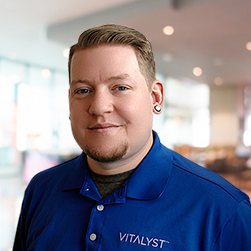Recently, we sat down with Ginny Hoban, Senior Partner Marketing Manager at Microsoft, to talk about the importance of adoption and change management services and how they can help customers accelerate their path to value with Microsoft technology, including Office 365 and Teams. Here is the full transcript of the conversation.

Ginny Hoban, Senior Partner Marketing Manager, Microsoft
GREG HEADLEY: Hello Ginny. We appreciate you taking
time out to speak with us today. Before we begin, could you take a moment to
introduce yourself and what your role is at Microsoft?
GINNY HOBAN: Sure Greg. I am part of the Microsoft
365 Marketing team at Microsoft, and a large part of my focus is working with our
channel partners. The organizations that help sell our solutions and provide
additional services, such as change management, deployment, adoption and
training. Right now, a big part of my job and focus is helping customers
understand the value that partners can bring when they decide to deploy Office
365 and Teams.
HEADLEY: Change management and adoption—those are two topics that we
have been hearing a lot about from Microsoft over the past year. Can you talk a
little bit about why they are so important to Microsoft?
HOBAN: Over the past few years, we've really been seeing this increased need for focus on value. We all know it, right? You deploy a new technology and it just doesn't get you quite what you wanted in terms of that value you expected when you decided to deploy it. People aren't using the new technology or aren’t fully understanding how to use it to get to the business outcome that they want. While there are still some technologies where the majority of the value comes from deployment alone, increasingly, to get the full value, there needs to be a focus on end-user adoption and behavior change.
What we have seen at Microsoft is that organizations have unique processes and workflows. So, in order to see the full value of our solutions and services you need to make a plan around communication and training, to make sure the customer knows why they are investing in the new technology and what the full value will be. That is all part of adopting the technology.
The idea of change management—looking at what your business goals are, outcomes that you are trying to achieve, the impact that a change in technology can have, both positive and negative, is really important. At the end of the day, if an organization deploys a new technology and it disrupts their business, or end-users don’t use it, then that business value was not achieved. So, for us, it is all about ensuring that our customers are supported and enabled to maximize the value of their investments in our technology. In fact, from our own research, we know that customers using ACM Services increase their adoption of new technology 4.5x more than customers who don’t.
HEADLEY: That is really powerful. Do you think that this is even more of a challenge with a solution such as Microsoft Teams?
HOBAN: When we talk to our customers and ask if they feel like they've achieved the adoption level that they want for Teams, many organizations say they haven’t. We see so much more opportunity for our customers to drive business value from Teams. And with Teams, it's about the use cases. It's about the why. It's about the value and being able to really talk to your end-users about why they should be using it, how they should be using it, and really coming up with a plan for how you're going to do communications and training and excitement around driving this.
Some of that work
customers can do themselves—maybe all of it they can do themselves. But what
we're seeing is that there's a lot of value in bringing in a partner to help
with the skill sets that they don't have.
The other thing
is, while some customers may have the skills to successfully deploy and drive
adoption, often they don't have the bandwidth and resources. None of us have
enough time to do everything we want to do. Being able to bring in a partner to
support and scale in these areas can be extremely valuable, especially when you
can find a partner that specializes in providing these kinds of services, because
they can also bring an outside perspective—from the scenarios they're seeing,
opportunities across all sorts of different customer types and sizes, and can
bring some real amazing expertise to bear.

HEADLEY: For customers who are deploying or have deployed Office 365
and/or Teams, how should they get started?
HOBAN: When a customer plans to buy new technology, they know they
are signing up for a commitment, a commitment of time and resources. When it
comes to the topic of user-focused adoption and change management (ACM),
everyone has a different reference point.
When we begin a
conversation about ACM with a customer, we start with a few basic questions to
get a pulse on what the customer knows about ACM:
- Does
your business have a clear vision of what is expected to change for end-users
as a result of a technology initiative? - How
much of your project’s success depends on employees’ willingness and ability to
change? Is there significant change in the way you or others will work? - How
did you or employees at your company handle the change the last time you were
all asked to use new technology? - What
are the expected business outcomes for this project?
These questions
help reveal where people’s perceptions intersect with the reality of their
situation and the potential that ACM can offer them as part of their technology
engagement. When we go through these questions with customers, in just a few
minutes we can usually narrow in on the areas where ACM services can have the
most potential and measurable impact to the customer’s project.
And with a
solution such as Microsoft Teams, we offer additional tools to help customers.
Our partners have a standard Teamwork Assessment that we have created, which
they can walk customers through. This assessment helps customers ensure that
they are exploring these questions and aligning their business goals and the expected
business outcomes that they are looking to achieve with their deployment of the
technology.
HEADLEY: That assessment has become a valuable part of our customer engagements. It is something that we offer to all our customers who are planning for or are in the middle of a Teams deployment project. Thank you for taking time out to speak with us Ginny. We always appreciate your insights.
To request a Teamwork assessment or to learn more about Vitalyst’s Digital Adoption Solutions for Office 365 and Teams, click here.











